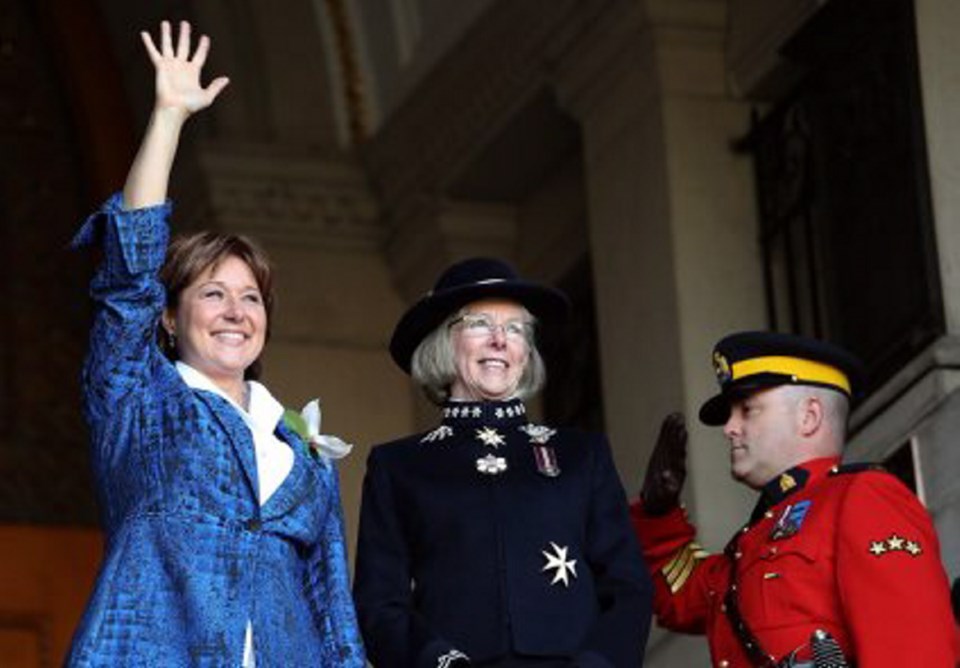 She and her government have had a lot of ups and downs over the past five years, but this week, as Christy Clark achieves the title of longest-serving female premier in Canadian history, there has been one constant.
She and her government have had a lot of ups and downs over the past five years, but this week, as Christy Clark achieves the title of longest-serving female premier in Canadian history, there has been one constant.
Day in and day out, she has a knack for driving her political opponents to distraction. For the first two years of her tenure it was based partly on the belief that she simply wasn’t up to the job. Whether gender politics played into that is an open question. Whatever the reason, opponents put a considerable discount on her early leadership, and on her chances of being anything other than a stand-in.
Her stunning 2013 general election win demolished that theory. Her critics have been confounded since then. They still disagree with everything she says and does. At the same time, they look as if they’re still grappling with the fact that she’s still premier.
Although Clark ignores most of those critics, the NDP is the main wellspring of the anti-Clark movement. And she has a particular talent for goading them when she deigns to pay any attention to them.
Meanwhile, the people who like her have grown to adore “the Comeback Kid.”
Here’s a quick recap of her five years in office:
• The Leadership — Clark was a front-runner from the time she announced her leadership bid based on one fact. She was an outsider who had had nothing to do with the harmonized sales tax. She had left politics and was a radio host when she decided to go for the top job. By the time former premier Gordon Campbell resigned over the HST debacle, the party and the government were shell-shocked by the backlash.
She had to fight past the Liberal caucus to win, as she got only one endorsement from sitting Liberal MLAs. She won the party contest by beating cabinet minister Kevin Falcon on the third ballot by just over 300 votes, out of more than 50,000 cast.
• The First Term — Clark was itching to call a quick election and continue doing what she’s good at: campaigning. She was talked out of it by her caucus, and in retrospect it looks like one of that group’s best decisions. She ran in a byelection in Vancouver-Point Grey and earned a spot in the legislature with a narrow win. Then she governed for two years. She ditched the HST and followed her campaign’s “family first” agenda, complemented by a wholesale embrace of the potential liquefied-natural-gas industry.
On the two big oil pipeline decisions that dominated that period, she announced five conditions that amount to “wait and see,” a stance that has served her well.
• The Election — By 2013, she had put a new face on the B.C. Liberal government. Still, they looked to be out of gas. A succession of ministers retired, leaving the impression they knew something bad was going to happen. Polls had her party down by 20 points or more at the outset. They had cut that deficit to about six points by the time voting day arrived. It still looked to be a comfortable edge for the NDP.
Against all expectations, she beat then-NDP leader Adrian Dix handily, although she lost her own seat in the process. She had to shunt Liberal MLA Ben Stewart off to a trade-commissioner posting to free up his safe Westside-Kelowna seat, in order to return to the legislature. It was one of the biggest upsets in B.C. history and will be a high point no matter what comes next.
Her 34 months in office since the 2013 win have been an exercise in coping. She has dealt with an assortment of nagging problems — secretive information processing, the firing of several health researchers, persistent problems with children’s services. She has also coped with a frustrating stall on her big LNG dream, while also managing to balance the fourth budget in a row in an economy with modest growth.
She has been refining a new theme in recent months, contrasting her natural positivity and enthusiasm and her government’s inclination to say “Yes” to job creation, with the “forces of No.”
That looks to be the basis of the pitch she’ll be making next year.



